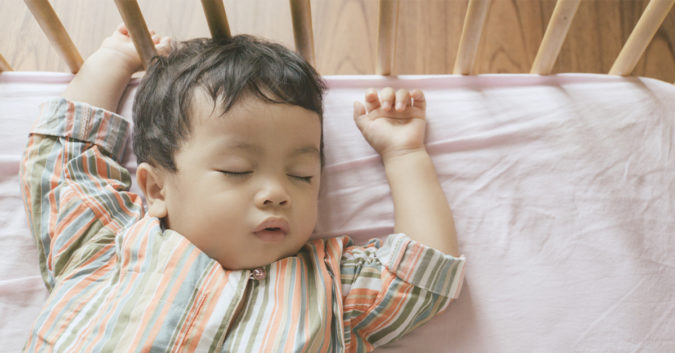Recently, the U.S. Consumer Product Safety Commission (CPSC) approved new safety measures to better protect infants from potentially fatal hazards associated with crib mattresses and after-market mattresses used in play yards.
The new standards, which aim to address the high number of infant injuries and deaths caused by crib and play-yard mattresses, are set to begin in Fall 2022.
Ill-fitting, overly soft, or poorly tested crib and play-yard mattresses can result in potentially fatal injuries to infants, including:
- Entrapment
- Lacerations
- Suffocation or asphyxiation
- Sudden Infant Death Syndrome (SIDS)
- Sudden Unexpected Infant Death (SUID)
Between January 2010 and April 2021, at least 494 adverse events involving crib mattresses were reported to CPSC, including 139 infant deaths and 355 nonfatal injuries.
The agency’s approval of new safety standards is only its latest move in a series of actions that combat an infant sleep-aid market rife with untested and hazardous products.
Addressing the Messy Market of Unsafe Baby Sleep-Aid Products
Consumer safety advocates have long argued that many popular baby sleep-aid products — including crib and play-yard mattresses — directly contradict well-established safe sleeping guidelines that recommend infants sleep alone, on their backs, and on flat surfaces only.
Trusted organizations like the American Academy of Pediatrics (AAP) have well-established guidelines for infant sleep:
“Infants should be placed for sleep in a supine position (wholly on the back) for every sleep by every caregiver until the child reaches 1 year of age.”
Still, companies have created a booming market for baby sleep-aid products. Facing sleepless nights, weary parents look for infant sleep solutions everywhere. Over the years, product manufacturers have capitalized on this problem by developing a wide array of sleep-aid products, many of which fail to meet best practices for infant sleep.
In its first step to combat this trend, CPSC announced in June 2021 a ban on an assortment of infant sleep-aid products that have been tied to at least 90 infant deaths — most notably inclined sleepers.
Set to begin this spring, CPSC’s ban closes a loophole that allows companies to manufacture, market, and sell infant sleepers that do not meet the federal safety standards for cribs, bassinets, and other bedside sleepers. Because many infant sleepers were not classified as cribs, bassinets, or bedside sleepers, they were not required to comply with the federal safety standards for those kinds of products.
Tied to at least 40 infant deaths, popular infant sleep-aid products like the Fisher-Price® Rock ‘n Play™ inclined sleeper and the Boppy® Newborn Lounger are two of many infant loungers impacted by CPSC regulations and recalls.
Fisher-Price® Rock ‘n Play™
Facing pressure from CPSC, Fisher-Price recalled roughly 4.7 million Rock ‘n Play inclined sleepers after investigations found the product to be tied to at least three dozen infant deaths from suffocation.
Due to the sleeper’s incline and soft mattress, infants were at risk of suffocation when rolling over or changing positions.
Parents of infants who suffered serious or fatal injuries have filed Rock ‘n Play sleeper lawsuits to help cover medical or funeral expenses, as well as pain and suffering.
Boppy® Newborn Lounger
The Boppy Company recalled several baby sleep products after at least eight infants died by suffocation while in the Boppy Lounger.
The three products named in the Boppy Lounger recall were:
- Boppy Original Newborn Lounger
- Boppy Preferred Newborn Lounger
- Pottery Barn Kids Boppy Newborn Lounger
Parents whose children were hurt or killed by one of these products may be eligible to file a Boppy Newborn Lounger lawsuit to pursue compensation and justice.
New Crib Mattress Safety Regulations to Protect Infants
CPSC’s latest actions are intended to ensure crib mattresses and other mattresses used in play yards and cribs are safer for infants.
The new crib mattress regulations:
- Require improved marketing, labeling, and instructions that better communicate the risks of injuries to consumers
- Enforce additional testing for mattress firmness
- Address hazards regarding lacerations from coil springs and excessively soft mattresses
- Reduce risk of SIDS and SUID by requiring all aftermarket mattresses sold for use in a play yard meet the exact standards of the original mattress, so babies do not risk suffocation in the gap between the mattress and the sides of the play yard
New safety regulations will also require companies to warn parents and caregivers of infants about SIDS, often caused by suffocation related to infant positioning, soft bedding, and gap entrapment.
About the new safety guidelines, CPSC Commissioner Richard Trumka said:
“Today, we fixed a long-standing gap in safety standards for baby products. We’ve long known that the safest place for a baby to sleep is on their back, on a firm, flat surface, with nothing else cluttering the space. But until today CPSC did not have safety standards for the one item left in the baby’s sleep space — the mattress. Babies will be safer because of CPSC’s rule to improve crib mattress safety.”
With CPSC’s new regulations, crib and play-yard mattresses become part of a group of 20 nursery products that will soon have mandatory safety standards. The group includes infant-sleep products, cribs, bassinets, play yards, bedside sleepers, swings, toddler beds, bouncer seats, and changing tables, among others.
